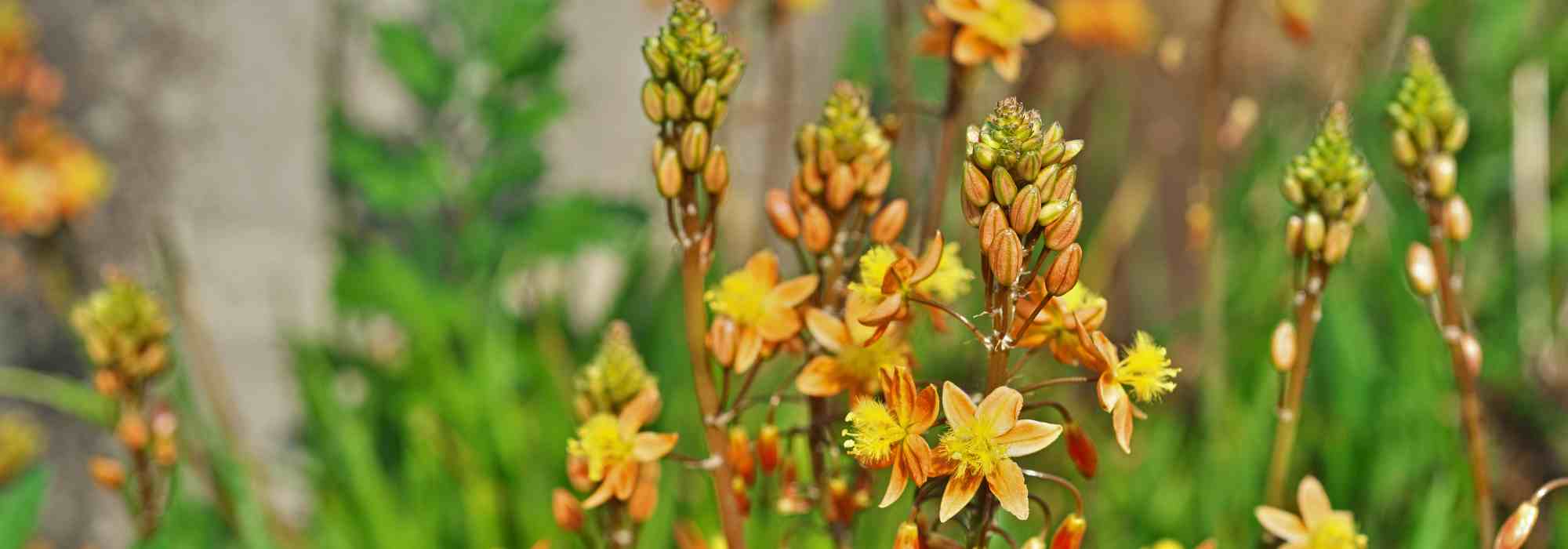
Bulbine: planting, growing and caring
Contents
The bulbine in a nutshell
- The Bulbine frutescens is a very low-maintenance plant, requiring little watering once established.
- This perennial offers abundant and prolonged flowering, in orange or yellow, from late spring until autumn.
- The Bulbine is a non-hardy plant, only able to withstand temperatures down to -4°C.
- It prefers a location in full sun or partial shade, and well-drained soil.
- Bulbines are planted in pots to be stored indoors during winter in colder regions.
The word from our expert
Among the bulbines, the Bulbine frutescens is the only one that can be cultivated in our latitudes in the garden. It is a succulent perennial plant native to South Africa, distinguished by its rosette foliage, composed of fleshy, linear, green leaves, forming compact and dense clumps. Its flowering, prolonged and abundant, from spring to autumn, produces star-shaped flowers in yellow or orange, attracting a multitude of pollinators such as bees and butterflies.
In terms of cultivation, the Bulbine frutescens is remarkable for its ability to adapt to various conditions. It prefers full sun locations, but also tolerates partial shade. Its water needs are moderate, making this plant particularly suited to dry gardens or regions suffering from drought. Indeed, once established, it can withstand long periods without watering. It thrives in well-drained soil and can tolerate temperatures as low as -4°C.
Propagation of the bulbine is also easy, allowing this plant to be multiplied effortlessly. The most common method involves dividing the clumps in spring or autumn. It is also possible to sow seeds in spring in light, well-drained soil. This ability to multiply quickly and easily makes it ideal for creating beautiful borders, flower beds, and rockeries, or for filling pots to brighten up patios and balconies.
Beyond its ornamental qualities, the Bulbine frutescens has been used for centuries in traditional African medicine, its sap is renowned for its soothing and healing properties.
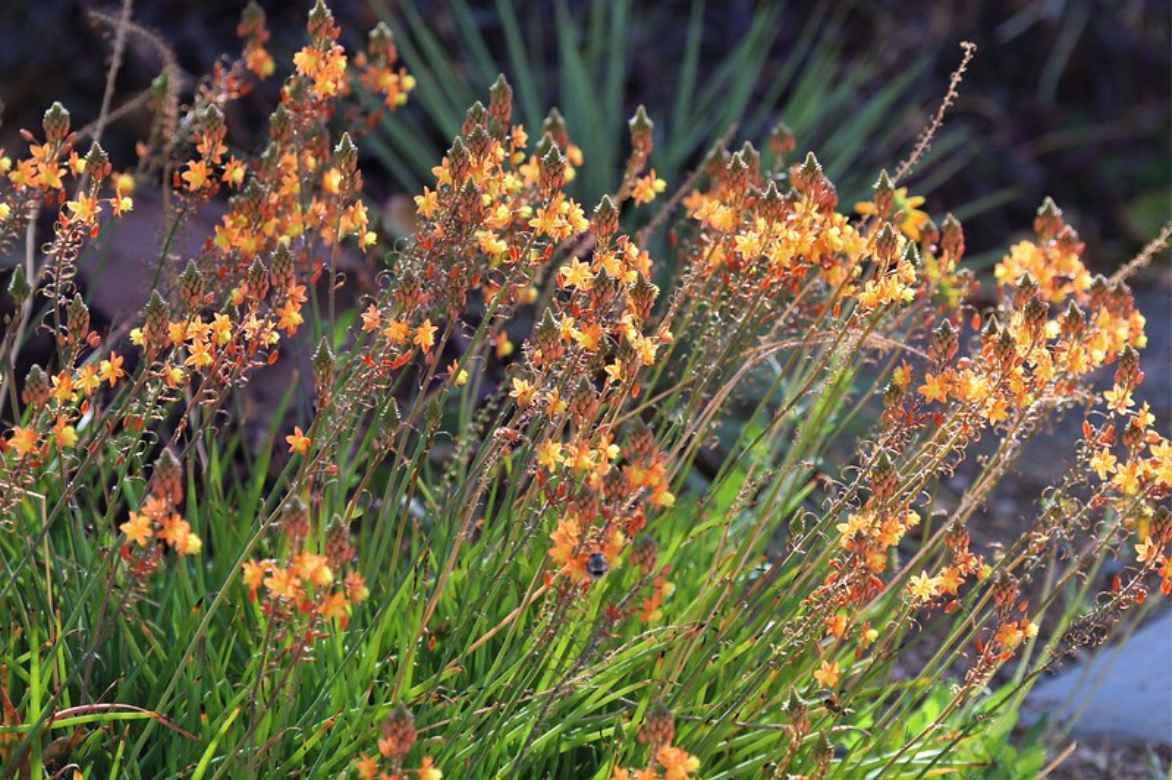
Bulbine ‘Tiny Tangerine’ (photo Renee Grayson – Flickr)
Botany and description
Botanical data
- Latin name Bulbine frutescens
- Family Asphodelaceae
- Common name Bulbine, Yellow Bulbine
- Flowering May to November
- Height 60 cm
- Sun exposure sun
- Soil type stony, poor and calcareous, well-drained
- Hardiness -6°C max
Bulbines belong to the botanical genus Bulbine, which is part of the Asphodelaceae family. This family includes plants primarily native to the arid and semi-arid regions of southern Africa. Among the twenty or so species in the Bulbine genus, the most widespread and cultivated is Bulbine frutescens or Yellow Bulbine. This species is characterised by its fleshy, linear leaves forming dense clumps and its star-shaped yellow or orange flowers that bloom in long inflorescences. The natural habitat of Bulbine frutescens consists of meadows, savannas, and rocky areas, where it often grows in sandy, well-drained soils. Adapted to arid climates, this plant has developed remarkable drought resistance.
Bulbine frutescens is frequently planted in xeriscaping demonstration gardens (landscaping adapted to dry conditions) to show how gardens can be beautiful and flourishing with minimal water. This makes it an excellent example of a sustainable and eco-friendly plant, suited to regions where water is a precious resource.
Yellow Bulbine is a perennial plant with a compact clumping habit. It typically reaches a height of 30 to 50 cm and a similar width, forming a dense mat of foliage and flowers. The root system of Bulbine frutescens is fibrous and shallow, allowing it to adapt well to poor, well-drained soils. Its roots are efficient at absorbing water, even in drought conditions.
Please note: the name “Bulbine” derives from the Latin word “bulbus,” meaning bulb. However, contrary to what this name might suggest, Bulbine frutescens does not grow from a true bulb but rather from fibrous roots. The term likely refers to the fleshy appearance of its leaves, which may resemble those of bulbous plants.
The leaves of Bulbine are fleshy, linear, and green in colour. They are arranged in rosettes, measuring between 20 and 40 cm in length. Their succulent texture allows them to store water, contributing to the plant’s drought resistance.
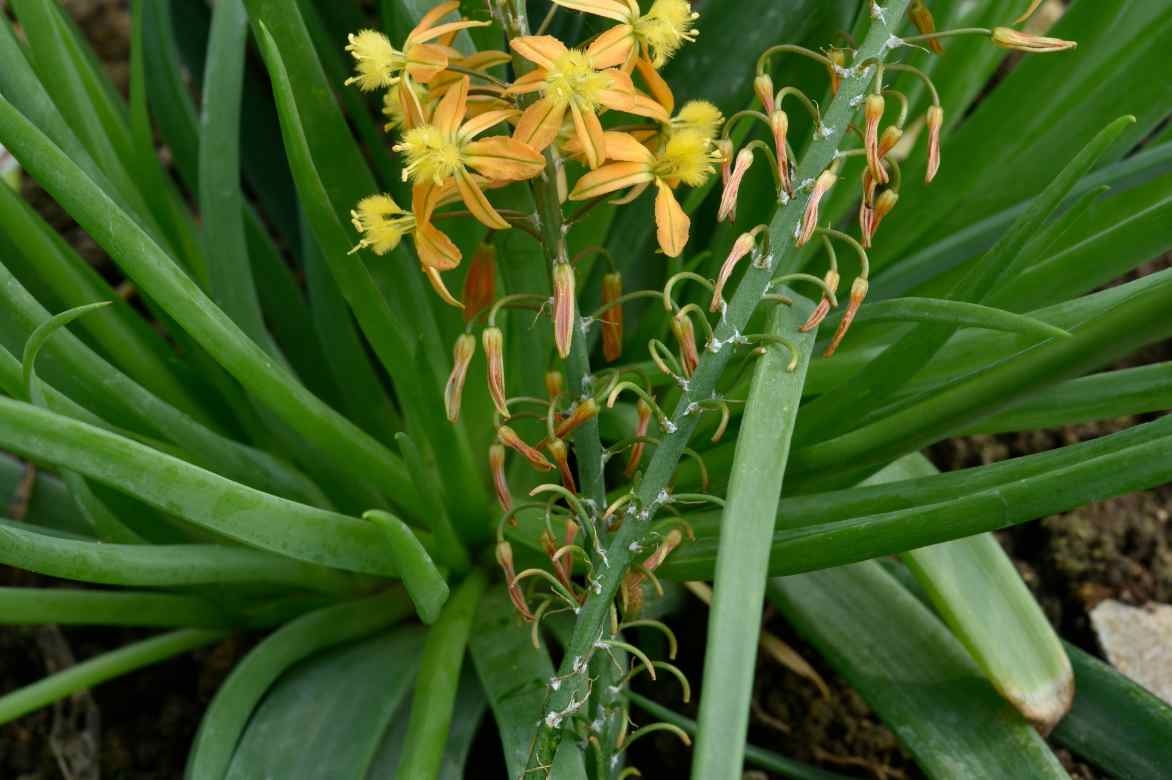
Bulbine frutescens: attractive rosette foliage.
The flowering of Bulbine frutescens (“Kattiepiering” in Afrikaans) is abundant and prolonged, lasting from late spring to autumn. The flowers are star-shaped, often yellow or orange in colour, and grouped in terminal inflorescences on upright stems. Each flower measures about 1 to 2 cm in diameter. Botanically speaking, the inflorescence is a raceme, an indefinite inflorescence where flowers open successively from the base to the top along an elongated central axis. In the case of Bulbine frutescens, the star-shaped flowers are arranged in clusters along this floral stem, creating an attractive and prolonged visual effect during the flowering season.
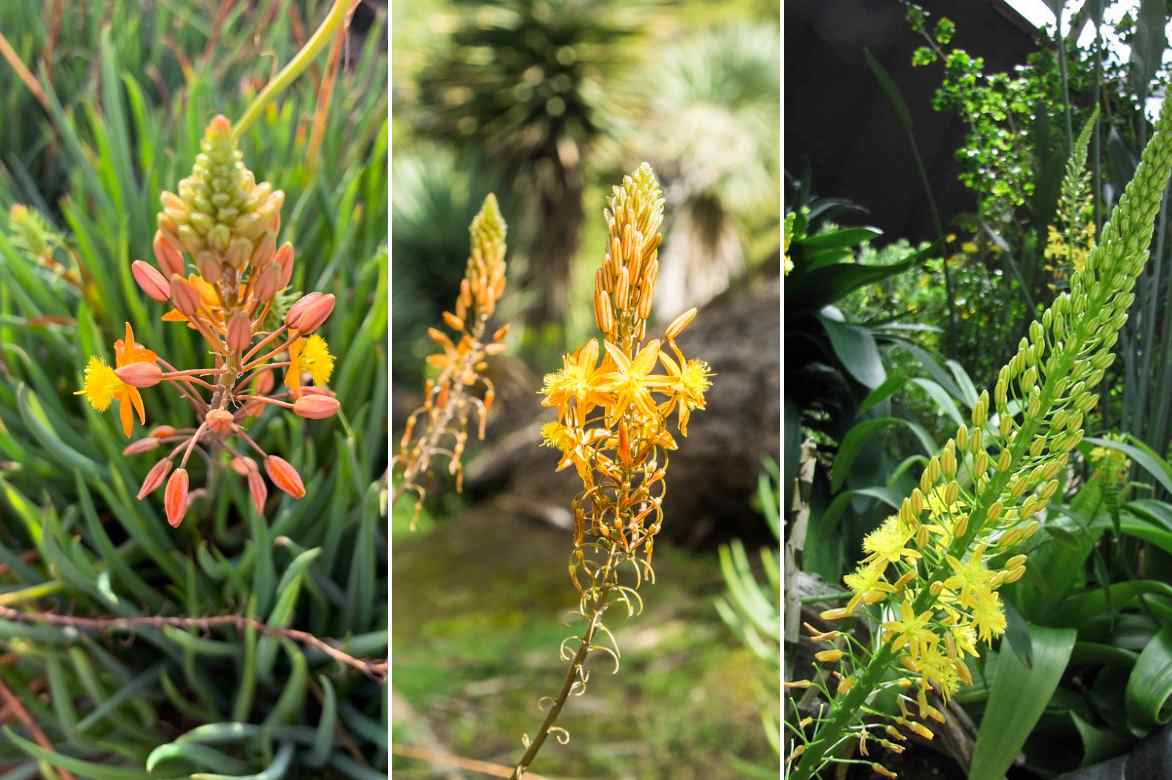
Bulbine frutescens, in orange and yellow, and on the right Bulbine natalensis (photo HQ – Flickr)
After flowering, Bulbines produce capsules containing the seeds. These capsules are small and discreet, developing at the tips of the flower stems. The seeds are tiny and can be harvested after the capsules mature. They are easily sown in spring in light soil. Germination is quick, allowing for easy propagation of the plant.
Our selection of bulbine
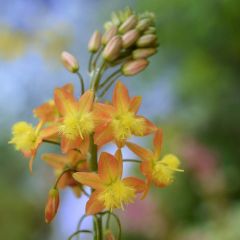
Bulbine frutescens
- Période de floraison June to December
- Hauteur à maturité 55 cm
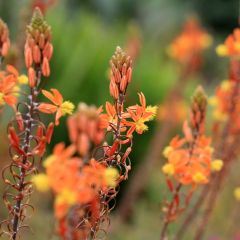
Bulbine frutescens Hallmarck
- Période de floraison June to December
- Hauteur à maturité 55 cm

Bulbine frutescens Medicus
- Période de floraison June to December
- Hauteur à maturité 55 cm
Planting the Bulbine
Where to Plant?
Bulbine frutescens prefers a location in full sun, but can tolerate light partial shade. To ensure optimal growth, choose a well-drained, light, and sandy soil. Avoid heavy, clay soils as they retain too much moisture and can cause root rot. It is well-suited to Mediterranean, xerophytic, or meadow-style gardens. Ensure you leave enough space between the young plants to allow for good air circulation and prevent fungal diseases.
As it is only hardy down to -4°C, the bulbine will need to be grown in a pot in most parts of France, except for the south and the Atlantic coast. Use a 40 cm diameter pot with drainage holes. Opt for a light and well-drained substrate, such as a mix of cactus and succulent compost or universal compost mixed with coarse sand or perlite. Place the pot in a sunny spot, where the plant will receive at least six hours of sunlight per day. Water moderately, allowing the substrate to dry out between waterings to avoid excess moisture.
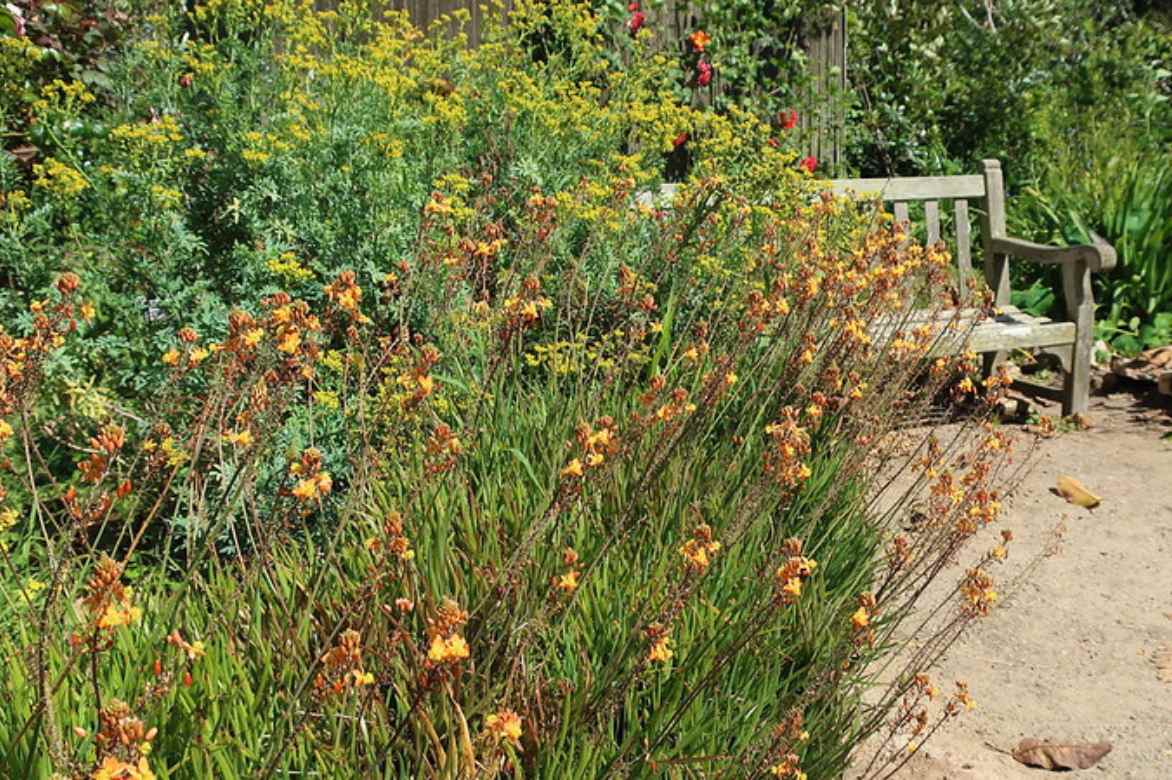
Bulbine frutescens and Ruta graveolens in the San Diego Botanical Garden (photo cultivar413 – Flickr)
When to Plant?
The best time to plant Bulbine frutescens in the ground is in spring, when the risk of frost has passed and the soil begins to warm up. For pot planting, spring is also the ideal time.
How to Plant?
In the Ground
- Soil preparation: loosen the soil to a depth of about 30 cm. Add lava granules or gravel if your soil is heavy to improve drainage.
- Planting: dig a hole twice as wide as the plant’s root ball and of the same depth. Place the root ball in the hole, ensuring the top of the root ball is level with the soil. Fill the hole with the amended soil, lightly firming to eliminate air pockets.
- Watering: water thoroughly after planting to help the plant settle in. Thereafter, water moderately, allowing the soil to dry out between waterings.
In a Pot
- Pot selection: choose a pot at least 30 to 40 cm in diameter and 25 to 30 cm deep. Ensure it has drainage holes.
- Substrate preparation: use a mix of cactus or succulent compost, or blend universal compost with coarse sand or perlite to ensure good drainage.
- Planting: place a layer of gravel or clay pebbles at the bottom of the pot. Fill the pot halfway with the prepared substrate. Position the Bulbine frutescens root ball in the centre of the pot and fill around it with the remaining substrate, leaving about 2 cm at the top of the pot for watering. Lightly firm the soil.
- Watering: water generously after planting. Thereafter, water moderately, ensuring the substrate dries out between waterings.
Maintenance of Bulbines
Watering
The Bulbine frutescens is drought-tolerant, so avoid excessive watering, which can cause root rot.
Pruning
After flowering, prune the faded flower stems to encourage new flowering and maintain a tidy appearance. Remove dead or damaged leaves to prevent diseases and pests.
Fertilisation
In open ground, apply well-decomposed compost at the base of the plant in early spring to stimulate growth and flowering. For potted plants, a fertiliser for succulent or cactus plants is suitable.
Winter Protection
- In open ground: In regions with harsh winters (below -6°C), apply mulch around the young plants to protect the roots from frost. If possible, cover the plants with a winter fleece.
- In pots: Bring the pots indoors during winter to a bright and cool location. Reduce watering and avoid excess moisture.

Bulbine frutescens (photo Leonora Enking – Flickr)
Diseases and Pests
Diseases
- Root rot: caused by excess moisture or poor drainage. The roots become soft and black. To prevent this disease, ensure the soil is well-drained and avoid overwatering.
- Powdery mildew: a fungal disease that appears as a white powdery coating on the leaves. It often develops in humid and poorly ventilated conditions. To prevent powdery mildew, ensure good air circulation around the plants and avoid wetting the foliage when watering.
- Fusarium wilt: another soil-borne fungus that can affect bulb plants, especially in poorly drained soils. Infected plants show yellowing and wilting of the leaves. To prevent fusarium wilt, use a well-drained substrate and avoid excess water.
Pests
- Aphids: these small sap-sucking insects can weaken the plant by causing deformations of the leaves and stems. To control them, use natural insecticides like black soap or introduce natural predators such as ladybirds.
- Mealybugs: they appear as small white, cottony clusters on the leaves and stems. They weaken the plant by sucking the sap. To eliminate them, use a cotton swab dipped in alcohol or insecticidal soap.
- Spider mites: these tiny mites cause yellowing and discolouration of the leaves. To control them, increase the humidity around the plant.
- Snails and slugs: they can nibble on the leaves, especially on young plants. If they are overpopulated, collect as many as possible early in the morning or evening and relocate them to another area where they will be less problematic.
Multiplication of Bulbines
Dividing Clumps
- Ideal Time: Dividing clumps is best done in spring or autumn in regions with mild winters.
- Preparation: Water the plant a few hours before dividing to ease extraction and reduce stress for the plant.
- Extraction: Carefully dig up the entire plant using a garden fork or spade. Gently shake off excess soil around the roots.
- Division: Separate the clumps into several sections, ensuring each section has enough roots and leaves. Use a clean, sharp knife if necessary to cut the clumps.
- Replanting: Immediately replant the new sections in prepared holes or pots filled with well-draining substrate. Water thoroughly after planting to help the roots establish.
Sowing
- Ideal Time: The seeds of Bulbine frutescens are best sown in spring.
- Seed Preparation: Harvest mature seeds from dried capsules on the plant. It is recommended to use them fresh for better germination rates. Otherwise, store them, once dry, in a dry place away from light.
- Substrate: Use a light, well-draining potting mix, such as seed compost or a mix of compost and sand.
- Sowing: Sow the seeds on the surface of the substrate and lightly cover them with compost. Press gently to ensure good contact with the soil.
- Germination Conditions: Place the pots or seed trays in a warm, bright location, at a temperature of around 20-25°C. Keep the substrate moist but not waterlogged, using a spray bottle to avoid disturbing the seeds.
- Post-Germination Care: The seeds should germinate within a few weeks. Once the seedlings are large enough to handle, transplant them into individual pots or directly into the ground, following planting advice to ensure their growth.
Association
To create a harmonious and attractive flower bed with Bulbines frutescens, choose companion plants with similar needs in terms of well-drained soil, full sun, and drought tolerance. For a pleasing contrast of colours to the eye, opt for blue and yellow flowering plants, with a touch of red.
The Bulbine frutescens ‘Medicus’ will be placed in groups to form the heart of the flower bed with their bright yellow flowers. A few lavenders ‘Grosso’ will add a contrasting splash of colour and a pleasant fragrance. The Blanket Flower ‘Mesa Bright Bicolor’, with its yellow flowers and red centres, will bring a bit of pep to liven up the whole arrangement.
The tall Perovskia ‘Blue Steel’ produce stunning lavender-blue flower spikes, along with silvery-grey foliage that will soften any overly bold colours. Add the Yarrow ‘Moonshine’, with its yellow flowers, to complement the yellow of the bulbines harmoniously. Finally, a handful of Agapanthus ‘Vallée de la Loire’, with its large blue flower umbels, will add a vertical dimension to the flower bed.
To create a harmonious flower bed, plant the Bulbine frutescens in groups at the centre. In the background, the lavenders and perovskias will add height and colour contrast. At the front, the blanket flowers and yarrows will place touches of yellow, while the agapanthus, strategically scattered, will provide vertical focal points.
→ Discover more pairing ideas in 5 beautiful ideas for pairing bulbine!
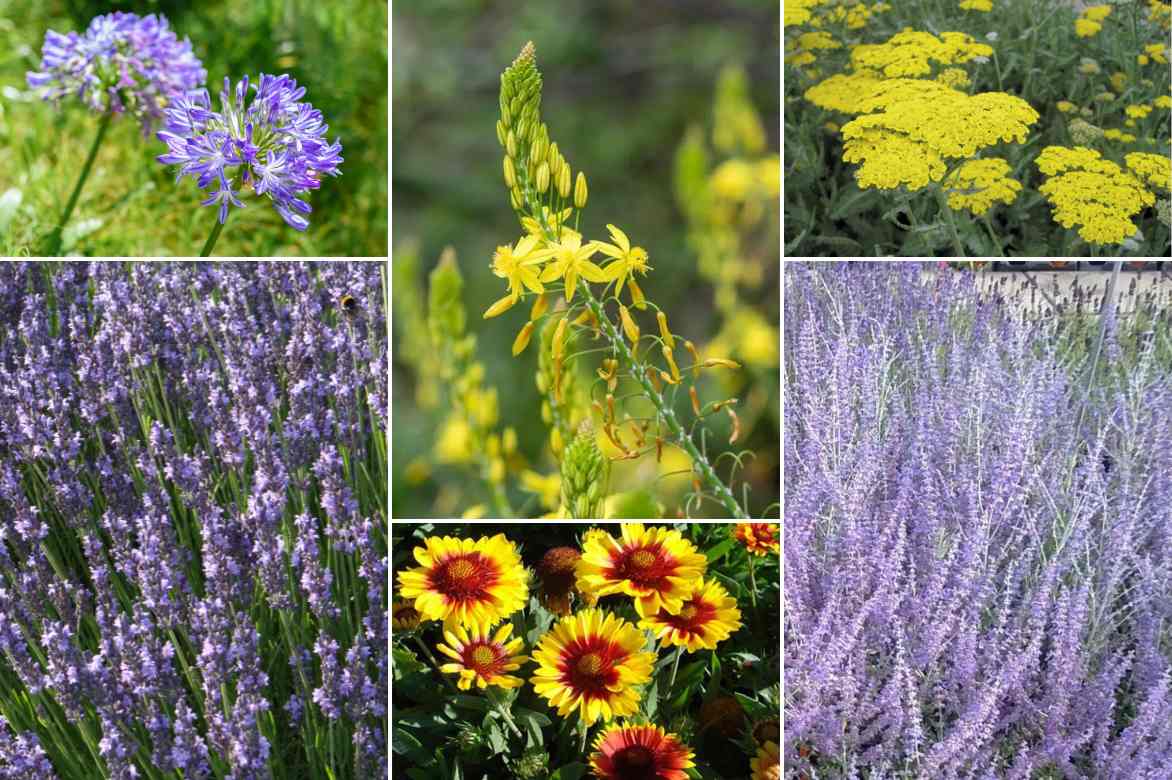
Agapanthus, Bulbine frutescens ‘Medicus’, Yarrow ‘Moonshine’, Lavender ‘Grosso’, Blanket Flower ‘Mesa Bright Bicolor’, and Perovskia ‘Blue Steel’.
To go further...
- Discover our tutorial: How to propagate bulbine?
- Among succulent plants and cacti, some are hardy enough to be grown in our climate. Learn more in our guide: Hardy cacti and succulent plants.
- Xeriscaping is gaining popularity. Find out more in our guide: 10 hardy plants for a dry, exotic garden.
- Bulbines belong to the Asphodelaceae family, just like aloes, daylilies, phormiums, Eremurus, or Kniphofias.
- Subscribe!
- Contents
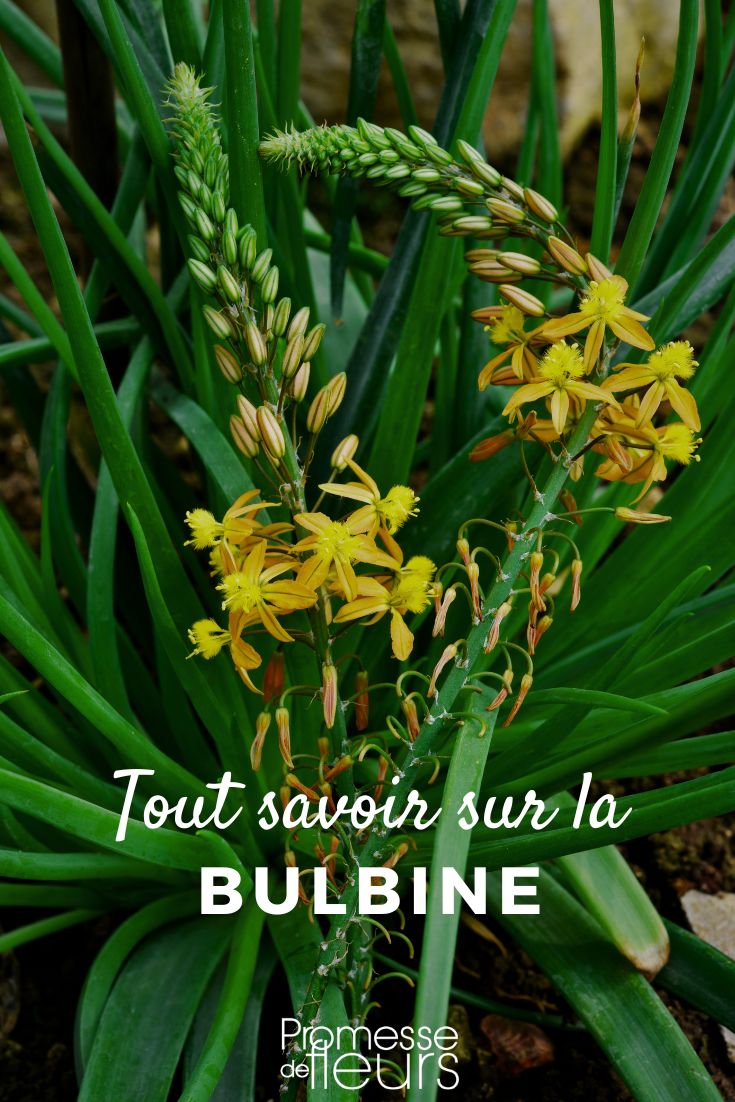































Comments